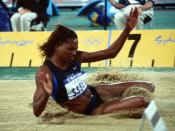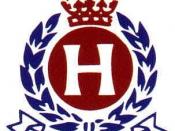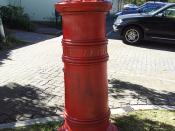Homebush/Newington
Homebush is a suburb of Sydney, New South Wales, Australia, located in the municipality of Strathfield. It was established in the 1800s by the colony's then assistant surgeon D'Arcy Wentworth.
A scouting party had recorded "The Flats", the extensive tidal wetlands at Homebush Bay, within 10 days of the arrival of the first fleet in Australia.
Within 10 days of the first fleet arriving in Australia a scouting party had found it out and recorded it as "The Flats", with extensive tidal wetlands. Thomas Laycock was the first recipient of a land grant in the Bay area. He acquired 40 hectares in 1794 and a further 40 hectares in 1795. By 1803, Laycock's estate totaled 318 hectares and was named Home Bush. Therefore giving the town its name.
In 1825, a horseracing track was developed on the estate, and between 1841 and 1860 the track was used as the headquarters of the Australian Jockey Club.
D'Arcy had died in 1827 and left his property to his son Charles Wentworth (who had been a member of the first European exploration party to find a route through the Blue Mountains).
The Newington Estate was first offered to the Government for use as an Asylum for the Insane in 1874.This offer was turned down by the government. However, in 1879 a report was issued declaring Newington suitable for a Reformatory School for Boys or a Benevolent Asylum for aged women. The Government acquired about 19 hectares of land.
In 1960 it was proposed that the hospital should be closed and the site sold to industry. The significance of the site, however, stimulated significant public opposition to the plans. In 1968, after a series of drawn out negotiations the Government decided to transfer the property to the Department of Prisons.
Between 1907 and 1988 the State Abattoirs were established. By 1923 The Homebush Abattoir was the biggest in the Commonwealth and employed up to 1600 men. It had a killing capacity of 18000 to 20000 sheep, 1500 cattle, 2000 pigs and 1300 calves per day.
In 1911 9.5 hectares of land was resumed from the State Abattoir for the State Brickworks. By 1925, the site comprised 23.5 hectares. During the period 1927 - 1930 the Brickworks showed a declining profit margin and in 1930 - 1933 there was an increasing deficit. The site was closed in 1940 and in 1942 was taken over by the Naval Armament Depot to be used as an ammunitions store. After World War II the Government passed an act to enable the re-establishment of the State Brickworks at Homebush Bay. At the same time as the abattoirs the brickworks closed down
When bidding for the 2000 Sydney Olympic and Paralympic Games a number of possible uses for the brick pit were put forward, however, once the Green and Golden Bell Frog was found, the site was developed as water storage and frog habitat.
Sydney was the proud host of the 2000 Olympic and Paralympic Games. These Games provided the world with some of the greatest sporting and entertainment events ever witnessed in the history of the Olympic and Paralympic Games. Both Games were a great success and the Sydney 2000 Olympic Games were declared as "the best Games ever" by IOC President Samaranch.
The local schools of today include Homebush Public School, Strathfield Girls High School and Homebush Boys High school. The schools in the area generally achieve high academic standards well above the average results for public schools. The population of the local government area including Homebush is 28,206 according the 2001 census. There are 13,862 men and 14,344 women.


